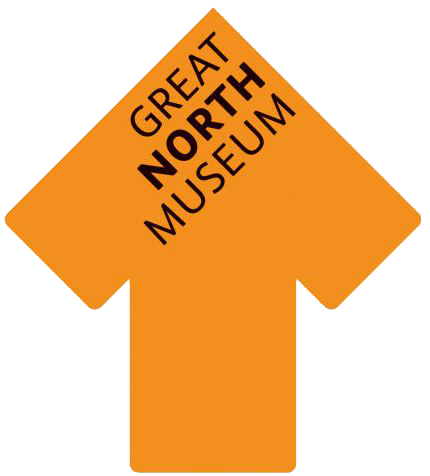
Alaska, the Western Subarctic and Mackenzie River drainage area and the Eastern Subarctic
Many Subarctic groups recognised that there was a bond between animals and humans. Every animal had a spirit and their favour had to be sought if it was to be hunted successfully. While clothing had to have a protective function against the weather, Northern peoples practised a high level of artistry to decorate their clothing in order to please the spirits of the animals they hunted.
Nowhere is this seen more effectively than in the caribou hide coats produced by the Innu. While the style of these garments reflected the fashions of European clothing with features like front openings, collars and cuffs, the artistry displayed on them was designed to enlist supernatural aid when hunting caribou. Typically, the hunter would receive instructions via dreams about symbols that would give him special powers. He would pass these onto his wife who would translate the images and paint them onto the skin. The main patterns were around the hem, the centre back and front, but the back gusset was the important section as it was the symbolic centre of the coat’s power.
We can assume that similar beliefs were behind the decoration of coats made by the neighbouring Cree- their moose hide coats were also painted but were less fitted in style.
Ornaments and attached panels of netted, woven, embroidered quill and beadwork enriched many pieces of Subarctic clothing. Originally, these embellishments would involve the use of porcupine quills for decoration. These quills would be softened and dyed before they were woven onto leather or birchbark. Objects with quillwork were among some of the earliest artefacts collected by European explorers. However, the influx of trade goods from Europe meant that during the 19th century, the use of beads for decoration ultimately displaced quillwork in clothing ornaments, just like it had done with bags.
Ornamental bags have been important to peoples of the Subarctic for centuries. When the first European visitors arrived, bags were associated with medicinal powers and sacred smoking, but by the 19th century they were used to carry many types of practicalities, including tobacco, fire-making paraphernalia and shot & shooting accessories.
While traditional quillwork was used to ornament some of the earlier bags, the use of beads became very popular throughout the 19th century and eventually replaced quillwork. At the same time, using beads to create floral designs on bags also became very prominent. These artistic traditions changed most rapidly in the areas close to European fur traders as materials such as beads, cotton and steel needles were supplied by traders in exchange for animal pelts. However, the adoption of these new materials spread westwards. Beaded bags and other similar ornamentations became a source of revenue for the many impoverished Subarctic societies, providing some relief in a harsh environment.
Snowshoes were vital in the winter months for fast and effective travel. They came in a variety of designs suitable for all possible conditions and terrain. Their names often referenced native animals, or the tribe that used that particular model. Not just practical footwear, they were an expression of artistry and craftmanship.





